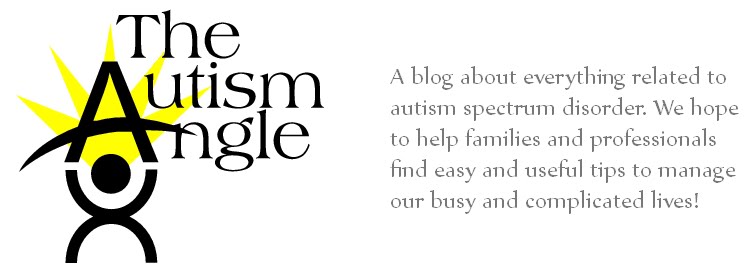This is a question many parents may be asking themselves, but it can be a difficult one to find answers to and for so many families, it's a difficult question to even ask out loud. Does My Child Have Autism? by Wendy Stone is a book that helps to answer this question and to provide parents with a direction of what to do and where to go if they have this suspicion or gut feeling that something may be different about the development of their child. Wendy Stone is a clinician, researcher, professor, and parent who provides invaluable insights and gentle guidance in asking the hard questions, seeking professional help, and taking the first steps in intervention. She is extremely sensitive to the vulnerability of the situation and writes her book accordingly.
The book is divided into the following chapters:
What Exactly Are Autism Spectrum Disorders?
What Should I look For?
The Early Diagnostic Process
Early Intervention
Working With Your Child at Home
She also includes the diagnostic criteria for ASD, as well as a modified checklist for the M-CHAT, a developmental screening tool for autism in toddlers. You may have heard of the M-CHAT or perhaps your pediatrician has used this tool at your child's check-ups. We're moving in the direction of this being standard protocol, however, from what I hear from parents, many professionals are not using it and may dismiss parents concerns when they inquire about autism. This is really upsetting to me and it means that parents need to be even more diligent in advocating for their children and finding professionals who will listen. The M-CHAT is actually available online (click
HERE go to the site) and I encourage parents to use this tool as to ask their pediatricians about it.
Dr. Stone talks about common comments she hears parents say before they know whether or not their child is on the spectrum. Some of the ones she mentions are:
"It's hard to get his attention- he likes to do his own thing"
"Everything she does is on her own terms"
"He gets things by himself"
"We thought she couldn't hear"
"He is always jabbering, but doesn't use words to communicate with us"
"He plays with toys by lining them up"
"He is a creature of habit-likes to have everything in its place and order"
"He hasn't figured out toys yet, but enjoys exploring cabinets and drawers"
Maybe you can identify with some of these statements? What I love about this book is that the author is careful to to describe the range of behaviors that can be associated with autism spectrum disorder, but reminds readers that no two children on the spectrum are exactly alike and reminds us that we need to look not only at the frequency of behaviors, but also the quality of the interaction/communication. She addresses common myths about autism and helps to clarify what ASD actually is. I love this paragraph she writes on page 5 of the book:
" In truth, if you had the opportunity to view a room of young children with autism, you would see some children talking and others using pictures or sign language to communicate. Some children would be sitting with their peers, others sitting by themselves. Some would be working at a table, others running back and forth along a wall or climbing on furniture. Some might be laughing during a tickle game with their parents, others having a tantrum and throwing toys. Looking at this group, you would wonder, "Which of these children have autism?" The simple answer is that they all do."
Wendy Stone helps walk the readers through the diagnostic process so they know exactly what to expect, provides advice in how to tell family members about the diagnosis, and helps parents navigate through tough decisions, like picking a preschool, choosing an intervention, and working on skills at home. I think this is a wonderful resource for parents who are new to this process that can certainly be extremely overwhelming and anxiety provoking.
I would love to hear from our readers-- thinking about your experiences early on in this process
What did you find helpful?
What was NOT helpful?
What resources did you use?
What do you wish you knew
or wish that someone would have told you?
How did you know what services to seek out?
Please, if you are interested, we would LOVE to hear from parents. Email us at theautismangle@gmail.com if you would like to be a guest blogger and write about your experiences when you were going through the diagnostic process. Nothing is more powerful than parents hearing from other parents who have been there. Thank you SO much and HAPPY AUTISM AWARENESS MONTH!
- Molly

























